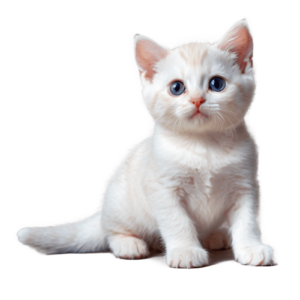
Print-on-Demand is changing the game in how we think about retail and creativity. This innovative approach allows businesses to offer a vast array of custom products without the need for large inventories or upfront costs. From t-shirts to books, the possibilities are endless!
With advancements in technology, Print-on-Demand services have become more accessible, allowing entrepreneurs and artists to reach global audiences easily. Understanding its potential can give you an edge in the competitive market, fostering an environment where creativity and commerce thrive together.
Print-on-Demand Overview
Print-on-Demand (POD) is a revolutionary retail model that allows creators, entrepreneurs, and businesses to sell custom products without the need for inventory or upfront costs. This approach has gained significant traction in the modern retail landscape due to its flexibility and accessibility, empowering individuals to launch their own merchandise with ease.The Print-on-Demand model encompasses a variety of products, enabling sellers to offer unique and personalized items tailored to the preferences of their target audience.
This expands the possibilities for creators to explore their creativity and cater to niche markets without the financial risks associated with traditional retail.
Types of Products Offered through Print-on-Demand
With Print-on-Demand, a diverse range of products can be customized and sold. The following categories highlight some of the most popular items available through POD services:
- Apparel: T-shirts, hoodies, and hats designed with unique graphics or personalized text can appeal to various audiences.
- Home Decor: Products such as wall art, throw pillows, and blankets can showcase artistic designs or photography.
- Accessories: Items like tote bags, phone cases, and mugs can be customized with personal messages or artwork.
- Stationery: Notebooks, planners, and greeting cards can feature unique designs, making them ideal for gifts or personal use.
- Footwear: Customized shoes and socks can display personalized designs or logos, appealing to individual styles.
The ability to offer such a range of products allows creators to tap into various markets and trends, ensuring they can meet customer demands effectively.
Technologies Involved in Print-on-Demand Services
The Print-on-Demand industry leverages several technologies to facilitate the creation and distribution of customized products. Understanding these technologies is essential for anyone looking to engage in POD:
- Digital Printing: This technology enables high-quality printing directly onto products, ensuring vibrant colors and excellent detail.
- Direct-to-Garment (DTG) Printing: A method primarily used for clothing, DTG allows for complex designs to be printed directly onto fabric, making it ideal for one-off or small batch orders.
- Sublimation Printing: This process involves transferring dye onto materials like polyester, perfect for vibrant colors on items like mugs and sportswear.
- Order Management Systems: Software that streamlines order processing, inventory management, and fulfillment, ensuring efficient operation of POD businesses.
- E-commerce Integration: Many POD platforms seamlessly integrate with online stores, allowing for easy listing, selling, and tracking of products.
These technologies not only make the process of creating and fulfilling orders smoother but also enhance the overall customer experience by providing high-quality products and efficient service.
“The flexibility of Print-on-Demand allows creators to turn their ideas into reality without the financial burden of traditional inventory management.”
Employment and Work in Print-on-Demand

The Print-on-Demand (POD) industry has created a variety of job opportunities for individuals seeking employment in a rapidly growing field. As businesses leverage technology to streamline processes, the types of roles available reflect this digital shift, catering to a range of skills and expertise. This segment delves into the various job roles, required skills, and the effects of POD on traditional employment structures in the printing and retail sectors.
Job Roles in Print-on-Demand
The POD industry encompasses a wide array of job roles that accommodate different skill sets and interests. Here are some key positions that are commonly found in this sector:
- Graphic Designer: Responsible for creating and designing artwork and layouts for products. Strong skills in design software like Adobe Illustrator and Photoshop are essential.
- Product Manager: Oversees the development and launch of products, ensuring they meet market demands and align with business goals.
- Marketing Specialist: Focuses on promoting POD products through digital marketing strategies, social media, and techniques.
- E-commerce Manager: Manages online storefronts, including product listings, customer engagement, and sales analytics.
- Customer Service Representative: Handles customer inquiries, complaints, and support requests, ensuring a positive shopping experience.
- Fulfillment Specialist: Manages order processing and logistics, ensuring timely delivery of products to customers.
Skills Required for Print-on-Demand Employment
To thrive in the POD industry, various skills are required, depending on the job role. The following skills are vital for employees in this field:
- Creativity: Essential for roles like graphic design and product development, where innovative ideas contribute to product appeal.
- Technical Skills: Familiarity with design software, e-commerce platforms, and printing technology is crucial for several roles.
- Analytical Skills: Important for roles such as marketing and e-commerce management, where understanding data can drive decisions.
- Communication Skills: Necessary for customer service representatives and marketing specialists to effectively engage with clients.
- Project Management: Useful for roles that involve overseeing product launches and coordinating with different teams.
Impact on Traditional Employment Structures
The rise of Print-on-Demand has significantly influenced traditional employment structures in both the printing and retail industries. Unlike conventional printing methods that require large inventories and upfront investments, POD operates on a made-to-order basis, which has several implications:
- Reduced Job Security: As businesses automate processes and reduce overhead costs, traditional printing jobs may decrease, leading to a shift in job security.
- Emergence of Freelance Work: Many individuals now turn to freelance roles, providing design or marketing services on an as-needed basis, promoting flexibility in employment.
- New Opportunities: While some traditional roles may fade, new jobs in digital marketing, e-commerce management, and data analysis are emerging, reflecting changing market needs.
“The Print-on-Demand model allows for a more dynamic workforce, adapting to consumer preferences while promoting entrepreneurship.”
Management Strategies for Print-on-Demand Businesses
Effective management practices are essential for navigating the unique challenges of the Print-on-Demand (POD) industry. With the rapid growth of e-commerce and the increasing demand for customized products, having a solid management strategy can make or break a POD business. This section delves into essential management strategies that elevate production efficiency and fulfillment processes while also providing a roadmap for business development tailored for startups in the POD space.
Effective Management Practices for Print-on-Demand Operations
A successful Print-on-Demand operation hinges on various management strategies that streamline processes and enhance productivity. Key management practices include:
- Automation of Processes: Implementing software solutions for order processing and inventory management reduces time spent on manual tasks, allowing for quicker turnaround times.
- Data-Driven Decision Making: Utilizing analytics tools to track sales trends and customer preferences can guide inventory decisions and product offerings, ensuring alignment with market demand.
- Supplier Relationship Management: Establishing strong relationships with suppliers and manufacturers can lead to better pricing, terms, and reliability in fulfilling orders.
- Quality Control Procedures: Implementing consistent quality checks before items are shipped minimizes returns and enhances customer satisfaction.
Optimizing Production and Fulfillment Processes in Print-on-Demand
Efficiency in production and fulfillment processes directly impacts customer satisfaction and profitability. Optimizing these areas involves strategic planning and resource allocation:
- Streamlined Workflow: Mapping out each step in the production process helps identify bottlenecks and areas for improvement, leading to faster outputs.
- Inventory Management: Utilizing just-in-time inventory practices can reduce holding costs and ensure you only print based on actual demand.
- Flexible Production Schedules: Adjusting work schedules based on peak seasons or promotional events allows for better resource management and fulfillment capability.
- Leverage Technology: Integrating print-on-demand platforms with e-commerce solutions enables seamless order processing and reduces the potential for errors.
Business Development Plan for Print-on-Demand Startups
Creating a robust business development plan is crucial for any Print-on-Demand startup. This plan should lay the foundation for growth and sustainability in a competitive market. Key components to consider include:
- Market Analysis: Conducting thorough research to understand target demographics, industry trends, and competitor landscapes to identify potential opportunities.
- Brand Positioning: Defining your unique value proposition helps differentiate your products from competitors, appealing to your niche market.
- Marketing Strategy: Developing a comprehensive marketing plan focusing on social media, , and influencer partnerships can drive traffic to your store.
- Financial Projections: Preparing detailed financial forecasts that include startup costs, expected revenues, and break-even analysis ensures that you have a clear understanding of your business’s financial health.
Publishing and Printing in the Print-on-Demand Model
Print-on-Demand (POD) is revolutionizing the way books and other printed materials are produced and distributed. This model allows creators to print items only when ordered, eliminating the need for large inventories and reducing risk. With the rise of digital solutions, POD has become an attractive option for both independent authors and established publishers, democratizing the publishing industry and enabling a wide array of creative possibilities.The transition to Print-on-Demand has fundamentally altered the landscape of traditional printing.
Unlike conventional printing methods that require substantial upfront costs and minimum order quantities, POD allows for small runs or even single copies of printed materials. This flexibility has made it easier for niche markets to thrive, as creators can produce specialized content without the pressure of large print runs. Moreover, the environmental impact of printing is reduced, as fewer resources are wasted on unsold inventory, making it a more sustainable option.
Advantages of Print-on-Demand for Publishing
The benefits of using Print-on-Demand for publishing books and similar materials are substantial. Here are some key advantages:
- Cost-Effective Production: POD minimizes upfront costs since authors and publishers only pay for what they sell, eliminating the financial risks associated with bulk printing.
- Accessibility for Authors: Independent writers can publish their work without needing a traditional publisher, allowing for greater creativity and the ability to reach niche markets.
- Global Distribution: POD services often include distribution options that make it easy to reach readers worldwide without additional shipping costs or logistics challenges.
- Rapid Turnaround: Authors can quickly get their books to market, as POD processes are often much faster than traditional printing methods.
- Customization Options: Creators can easily make updates or changes to their work, ensuring that the most current version is always available for purchase.
Transformation of the Traditional Printing Industry
Print-on-Demand has not only made waves in publishing but has also redefined the entire traditional printing industry. This transformation can be observed in several key areas:
- Shift in Business Models: Many traditional printers are adapting to include POD services, allowing them to remain competitive and meet the changing demands of consumers.
- Reduction of Waste: The POD model contributes to a significant decrease in waste generated from unsold inventory, making it an environmentally friendly choice for both publishers and consumers.
- Increased Variety and Choice: With POD, readers have access to a broader range of titles, including those that may not have made it to print through traditional channels due to niche appeal.
- Enhanced Technology: Advancements in printing technology have made it possible for POD to deliver high-quality products that rival conventional printing methods, ensuring that consumers receive products that meet their expectations.
Successful Publishing Ventures Utilizing Print-on-Demand
Numerous publishing ventures have successfully harnessed the power of Print-on-Demand technology. These examples illustrate the potential of POD:
- Amazon Kindle Direct Publishing: This platform allows authors to publish their eBooks and print books easily, with the convenience of reaching millions of readers through Amazon’s global marketplace.
- Lulu: Lulu is a well-known POD publisher that caters to independent authors, offering a range of options for self-publishing, including custom book sizes and formats.
- Blurb: Blurb specializes in creating beautiful photo books and art books, utilizing POD to help photographers and artists showcase their work professionally without a hefty investment.
- IngramSpark: This service provides authors with the ability to distribute their books to libraries and bookstores, making it easier for independent authors to gain visibility.
Telecommunications and Marketing in Print-on-Demand
Telecommunications plays a pivotal role in promoting Print-on-Demand (POD) services, connecting creators with consumers more efficiently than ever before. In a digital-first world, effective communication channels are crucial for reaching potential customers and maintaining relationships with existing ones. This segment delves into how telecommunications facilitate these connections and Artikels successful marketing strategies tailored for POD businesses.
Role of Telecommunications in Promoting Print-on-Demand Services
Telecommunications encompasses various digital channels that enable interaction between businesses and customers. It includes email, social media, live chat, and SMS messaging, all of which are essential for POD services. These channels help businesses disseminate information rapidly and engage with their audience effectively. A seamless communication strategy can enhance customer experience and build loyalty. For instance, utilizing email marketing can keep customers informed about new products, special offers, or changes in service.
Similarly, social media platforms enable direct engagement with consumers, offering a space for feedback, inquiries, and community building.
“Telecommunications is not just about connectivity; it’s about creating relationships.”
Effective Marketing Strategies for Print-on-Demand Businesses
Successful marketing for POD businesses combines traditional marketing principles with modern digital tactics. Here are some strategies that have proven effective:
1. Content Marketing
Creating valuable content that resonates with your target audience can drive organic traffic. Blogs, tutorials, and videos showcasing products can help establish authority and attract potential customers.
2. Search Engine Optimization ()
Optimizing your website for search engines is essential. Use relevant s in your product descriptions, blog posts, and metadata to improve visibility.
3. Pay-Per-Click (PPC) Advertising
Targeted ads through platforms like Google Ads or Facebook can generate quick traffic. This method allows businesses to reach a specific audience based on demographics and interests.
4. Email Campaigns
Regular newsletters that showcase new products, customer testimonials, and promotions keep your brand top-of-mind and encourage repeat purchases.
5. Influencer Partnerships
Collaborating with influencers can expand your reach significantly. They can introduce your products to their followers, providing a trusted endorsement.By implementing these strategies, POD businesses can enhance their marketing effectiveness, ultimately leading to increased sales and brand loyalty.
Utilizing Social Media to Enhance Print-on-Demand Brand Visibility
Social media is a powerful tool for increasing brand visibility in the Print-on-Demand industry. Platforms like Instagram, Pinterest, and Facebook allow businesses to showcase their products visually, engaging a broad audience. Here are some guidelines for effectively leveraging social media:
Build a Consistent Brand Image
Maintain a cohesive visual style and tone across all social media channels. This strengthens brand recognition and recall.
Engage with Followers
Respond to comments and messages promptly. Engaging with your audience fosters a sense of community and loyalty.
User-Generated Content
Encourage customers to share photos of their purchases. Reposting this content not only provides social proof but also creates an authentic connection with your audience.
Run Contests and Giveaways
These can amplify your reach and attract new followers. Encourage participants to share your content or tag friends to increase visibility.
Utilize Stories and Live Features
Use stories to showcase behind-the-scenes content or host live sessions for product launches or Q&As. This adds a personal touch to the brand and encourages real-time interaction.Harnessing the potential of telecommunications and social media can dramatically improve a Print-on-Demand business’s outreach and customer engagement, paving the way for growth and success in a competitive market.
Textiles and Nonwovens in Print-on-Demand
The Print-on-Demand (POD) model has revolutionized various industries, and the textiles sector is no exception. This approach allows for the customization of fabric products with minimal investment and waste, making it an attractive option for businesses and consumers alike. As technology advances, the applications and innovations within textiles continue to expand, paving the way for more sustainable and personalized solutions.Innovations in fabric printing technologies have significantly transformed how textiles are produced and marketed in a Print-on-Demand context.
Modern digital printing techniques enable high-quality designs to be printed directly onto fabrics, reducing lead times and increasing flexibility for designers and retailers.
Applications of Print-on-Demand in Textiles
Print-on-Demand offers a broad range of applications in the textiles industry, catering to diverse consumer demands. This model supports the production of customized apparel, home textiles, and promotional products, among others. The flexibility of POD allows businesses to offer unique designs without the risk of overproduction. Key applications include:
- Custom T-shirts and Apparel: POD enables individuals and brands to create personalized clothing items, from unique designs to custom sizes.
- Home Decor Textiles: Items like curtains, cushions, and bed linens can be tailored to match individual tastes, providing an exclusive aesthetic for homes.
- Promotional Merchandise: Businesses can create branded items such as tote bags and banners tailored for events or marketing campaigns, maintaining a fresh inventory without large upfront costs.
Innovations in Fabric Printing Technologies
The development of new fabric printing technologies is crucial for maximizing the potential of Print-on-Demand in textiles. Some of the most notable innovations include:
- Direct-to-Garment (DTG) Printing: This method allows for detailed prints on various fabric materials, ensuring vibrant colors and intricate designs.
- Eco-Solvent and Water-Based Inks: These inks are less harmful to the environment, providing safer alternatives to traditional solvent inks while maintaining print quality.
- 3D Knitting Technology: This innovative approach can create complex textile structures in a single process, minimizing waste and allowing for intricate designs that were previously challenging to produce.
Eco-Friendly Practices in Textiles for Print-on-Demand
Sustainability is becoming increasingly important in the textiles industry, and Print-on-Demand offers a pathway to more eco-friendly practices. By producing items only when ordered, businesses can significantly reduce waste associated with overproduction and unsold inventory. Important eco-friendly practices include:
- Using Organic and Recycled Fabrics: Many POD providers now offer options to print on organic cotton or recycled polyester, which helps reduce the environmental impact of textile production.
- Implementing Sustainable Printing Processes: Innovations in printing technology focus on reducing water usage and energy consumption, contributing to a smaller carbon footprint in textile production.
- Promoting Local Production: By utilizing local printing facilities, POD businesses can minimize transportation emissions and support local economies, further enhancing sustainability efforts.
Business Creation and Development in Print-on-Demand
Starting a Print-on-Demand (POD) business can be an exciting venture, offering entrepreneurs the chance to tap into a creative marketplace with lower overhead costs. This section Artikels the essential steps to launch a successful POD business, explores available funding options for aspiring entrepreneurs, and emphasizes the significance of niche markets in this sector.
Step-by-step Guide for Launching a Print-on-Demand Business
Embarking on the journey of creating a POD business requires a clear understanding of several key steps. Here’s a concise guide to help you navigate the process:
- Identify Your Niche: Focus on a specific market that interests you, whether it’s custom apparel, home decor, or niche merchandise like pet products. A well-defined niche helps in targeting your audience effectively.
- Research Suppliers and Platforms: Select reliable POD suppliers (like Printful or Teespring) and e-commerce platforms (such as Shopify or Etsy) that align with your business goals.
- Create Your Designs: Invest time in creating unique, high-quality designs. Consider using design software or hiring freelancers if you lack the skills.
- Set Up Your Online Store: Design your online shop, ensuring it reflects your brand and showcases your products effectively. Utilize high-quality images and clear descriptions.
- Launch Your Business: Once everything is in place, launch your store. Utilize various marketing strategies to get the word out, such as social media ads or influencer partnerships.
- Analyze and Adjust: After launching, continuously monitor your sales and customer feedback to make necessary adjustments to your offerings and marketing strategies.
Funding Options for Print-on-Demand Entrepreneurs
Understanding the funding landscape is crucial for entrepreneurs beginning their POD journey. Various financing avenues are available to support initial costs, including:
- Bootstrapping: Many entrepreneurs start with personal savings, allowing them to maintain full control over their business without incurring debt.
- Crowdfunding: Platforms like Kickstarter or Indiegogo enable you to raise funds by presenting your business idea to potential backers who can contribute financially in exchange for early products or rewards.
- Small Business Loans: Traditional banks or online lenders offer loans specifically designed for small businesses. It’s essential to have a solid business plan to secure these loans.
- Angel Investors: Networking can connect you with investors willing to provide funds in exchange for equity, helping you grow your business while sharing potential profits.
- Grants: Some organizations offer grants for small businesses, particularly those focusing on innovation or community impact. Research local and federal programs that might apply.
The Importance of Niche Markets within the Print-on-Demand Sector
Niche markets play a critical role in the success of POD businesses. By focusing on specific customer segments, you can differentiate your brand and build a loyal following. Niche marketing allows you to:
- Reduce Competition: Targeting a niche often means facing less competition compared to broader markets, increasing your chances of being noticed.
- Enhance Customer Engagement: Tailoring products and marketing messages to a specific audience fosters deeper connections and encourages customer loyalty.
- Optimize Marketing Efforts: Specialized marketing campaigns can be more effective and less costly, reaching a concentrated audience that is more likely to convert into sales.
- Maximize Sales Opportunities: Unique offerings that cater to specific interests or passions can command higher prices due to their tailored nature.
- Build a Brand Authority: Establishing yourself in a niche can position your business as an authority in that area, enhancing your credibility and attracting more customers.
Domestic Services Related to Print-on-Demand
Print-on-Demand (POD) has revolutionized the way home-based businesses operate by integrating printing and fulfillment services that cater to individual entrepreneurs. This model enables small businesses to offer customized products without the burden of maintaining inventory. With minimal upfront investment and low risk, home-based entrepreneurs can harness POD to expand their offerings and reach new markets.One of the appealing aspects of POD is its adaptability to various domestic services that can enhance a home-based business.
Entrepreneurs can integrate POD solutions into their existing services or create entirely new business ventures. This flexibility fosters creativity and innovation, allowing individuals to tailor their offerings according to market demand and personal interests.
Examples of Domestic Services Integrating Print-on-Demand Solutions
Numerous domestic services can seamlessly incorporate Print-on-Demand solutions. These services can range from personalized products to creative offerings that leverage unique designs and customization. Below are some examples that highlight the potential of POD in home-based businesses:
- Customized Merchandise: Home-based entrepreneurs can create and sell personalized apparel such as T-shirts, hoodies, and hats featuring unique designs, slogans, or images tailored to niche markets.
- Personalized Gifts: Offering customized gifts like mugs, phone cases, and home decor items allows businesses to cater to special occasions such as birthdays, weddings, or holidays.
- Art Prints and Posters: Artists and designers can produce prints of their work, allowing customers to purchase high-quality reproductions directly from their online shops.
- Stationery and Office Supplies: Custom notebooks, planners, and business cards can be created and sold, appealing to both individuals and businesses looking for personalized office supplies.
- Books and Publications: Writers can self-publish their works, such as novels or guides, through POD services, eliminating the need for large print runs and storage space.
The impact of Print-on-Demand on home entrepreneurs and freelancing is significant, as it lowers entry barriers and empowers individuals to launch their businesses with minimal overhead. Traditional retail models often require substantial upfront investments, but POD enables entrepreneurs to create products only when there’s demand. This approach not only reduces waste but also allows for more sustainable business practices.
“Print-on-Demand transforms creative ideas into market-ready products without requiring inventory, making it an ideal solution for home-based businesses.”
Moreover, the POD model supports freelancers by providing them with the resources to monetize their skills and creativity. Whether it’s graphic design, photography, or writing, freelancers can utilize POD to offer unique, customized products that showcase their work and attract a wider audience. This model also encourages collaboration, as freelancers can partner with POD providers to expand their reach and grow their brand.
As home-based businesses continue to thrive, Print-on-Demand stands out as a versatile solution that promotes entrepreneurship and personal expression.
Translation Services in Print-on-Demand
In the ever-expanding world of Print-on-Demand (POD), translation services play a crucial role in tapping into global markets. As businesses aim to reach diverse customer bases, ensuring that products resonate culturally and linguistically becomes essential. This not only enhances customer experience but also drives sales and brand loyalty across different regions.Localization is the process where content is adapted to fit the cultural context of a target market.
For POD providers, this includes translating text and altering images, graphics, or even product descriptions to ensure they align with local customs and language nuances. However, several challenges can arise during this process.
Challenges in Localizing Content
The journey of localizing content in Print-on-Demand comes with its own set of obstacles. Recognizing these challenges can help businesses prepare better strategies for effective translation and cultural adaptation. Key challenges include:
- Language Nuances: Each language has its unique idioms, colloquialisms, and grammatical structures. Straightforward translation often fails to convey the intended message.
- Cultural Sensitivity: Certain images, phrases, or products may have different connotations in various cultures. Missteps can lead to offense or misunderstandings.
- Technical Limitations: Many POD platforms may not support multiple languages or character sets effectively, complicating the localization process.
- Quality Control: Ensuring that translations maintain the same level of quality as the original content can be challenging, especially when working with multiple translators.
Strategies for Successful Translation and Cultural Adaptation
Implementing effective strategies for translation and cultural adaptation can significantly enhance the reach and impact of Print-on-Demand products. The following approaches are vital:
- Engage Professional Translators: Utilizing native speakers or professional translation services ensures accuracy and cultural relevance in the translated material.
- Conduct Market Research: Understanding the preferences and behaviors of the target audience can guide the localization process, helping to tailor content appropriately.
- Incorporate Cultural Elements: Modify product designs and descriptions to include local symbols, colors, or themes that resonate with the audience.
- Test Localized Products: Before a full launch, consider releasing a pilot version of the product to gather feedback from local consumers, allowing for adjustments based on their responses.
“Successful localization goes beyond translation; it’s about creating a product that feels native to the target market.”
Attention to translation and localization can be a game-changer for Print-on-Demand businesses looking to establish a presence in international markets. By addressing the challenges thoughtfully and leveraging effective strategies, POD providers can enhance their offerings and build a loyal customer base around the world.
Clothes and Shoes in Print-on-Demand
The Print-on-Demand (POD) model has revolutionized the fashion industry, allowing brands to produce clothing and footwear without the risk of excess inventory. This innovative approach enables designers to cater to niche markets and trends while reducing upfront costs. As the demand for personalized and unique apparel grows, POD serves as a perfect solution for both established and emerging brands.Current trends in clothing and footwear through Print-on-Demand highlight a shift towards customization, sustainability, and on-demand manufacturing.
Consumers are increasingly seeking apparel that reflects their personality and values, leading brands to explore the potential of personalized designs.
Current Trends in Clothing and Footwear
The following trends illustrate how POD is shaping the clothing and footwear market:
- Customizable Apparel: Brands are offering options for customers to personalize their clothing, from selecting colors to adding unique graphics. This trend caters to the desire for individuality in fashion.
- Sustainable Fashion: With growing awareness of environmental issues, many POD brands are focusing on sustainable materials and ethical production methods. This not only appeals to eco-conscious consumers but also positions brands as socially responsible.
- Niche Markets: POD empowers brands to target specific demographics, creating clothing lines that cater to particular interests or lifestyles. This has led to the rise of specialized clothing such as activewear, streetwear, and even themed apparel.
- Rapid Response to Trends: The ability to quickly produce and ship items allows brands to capitalize on emerging trends or seasonal demands more efficiently than traditional retail models.
To illustrate the success of this model, several brands have thrived through a Print-on-Demand approach. Notably, brands like Printful and Teespring have gained popularity by enabling users to create their own apparel designs, while other companies like Apliiq and Redbubble allow artists to showcase their designs on various clothing items.
Challenges and Solutions in Quality Control
Quality control in Print-on-Demand clothing lines poses unique challenges due to the decentralized nature of production. Maintaining consistency in product quality while scaling operations requires robust strategies. Important aspects of quality control include:
- Material Selection: Choosing high-quality and suitable materials is crucial. Brands should partner with reliable POD suppliers who offer a variety of fabric options and ensure consistent quality across different orders.
- Sample Testing: Conducting sample tests before launching a full collection can help identify issues in printing quality, fabric feel, and overall design execution. This process can save brands from costly mistakes post-launch.
- Supplier Relationships: Building strong relationships with trusted suppliers can facilitate better communication regarding quality standards and expectations. Regular feedback and audits can help ensure that suppliers meet the brand’s quality benchmarks.
- Customer Feedback Loop: Implementing a system to gather and analyze customer feedback on product quality can help brands quickly identify and address issues. This proactive approach can lead to improvements in product offerings.
In addition to these strategies, using quality assurance software can streamline the monitoring process, ensuring that every product meets established standards before reaching customers.
Final Conclusion

In summary, Print-on-Demand represents a significant shift in retail and publishing, providing opportunities for both small businesses and independent creators. As this model continues to evolve, embracing its tools and strategies can help you succeed in a landscape that values customization and efficiency.
FAQ Section
What is Print-on-Demand?
Print-on-Demand is a business model where products are printed only after an order is made, allowing for customized and unique items without holding inventory.
How does quality control work in Print-on-Demand?
Quality control can be challenging in Print-on-Demand, but selecting reputable suppliers and using quality checks can help maintain standards.
Can I create my own designs for Print-on-Demand products?
Absolutely! One of the key advantages of Print-on-Demand is that you can create and sell your own unique designs on various products.
Is Print-on-Demand eco-friendly?
Many Print-on-Demand services utilize eco-friendly materials and practices, making it a sustainable choice for custom products.
What are the common challenges in starting a Print-on-Demand business?
Challenges can include finding reliable suppliers, managing customer expectations, and standing out in a crowded market.





